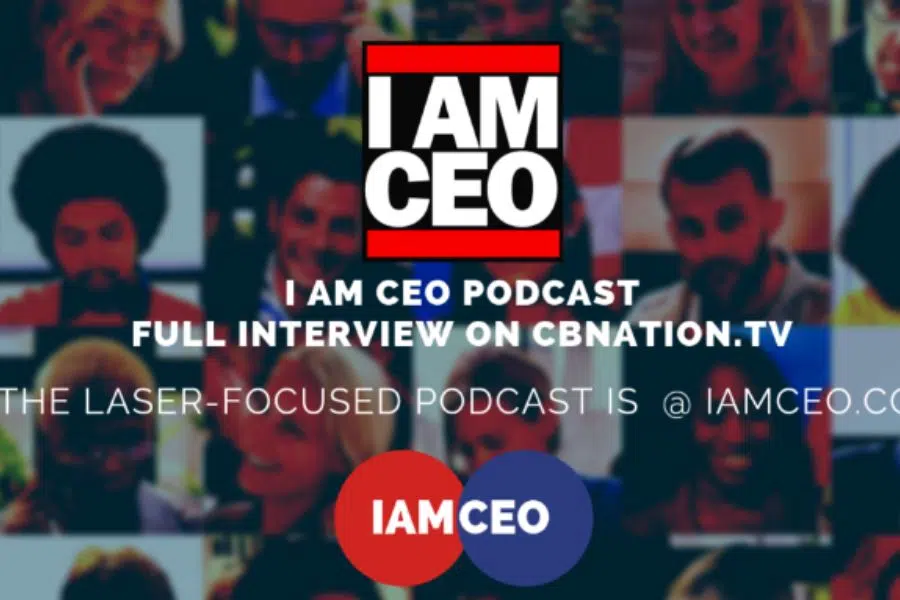What costs you more, hiring a top performer or losing a top performer? Before you get out your calculator, let me save you some time.
Losing a top performer will cost your company more than you will ever spend hiring that person. The reason why many business owners don’t believe that is because they’re only thinking about the hard costs of hiring a replacement, not the soft costs of losing an A-player. Like the loss of productivity, and the emotional costs, which can be very damaging to a business.
I’d like to take you on a deeper dive into the cost of employee turnover, and why your best strategy as a business owner is to hire the right people the first time. It’s not only going to save you money, it’s going to help your business be successful and grow.
If you’re saying to yourself, “Thank you, Captain Obvious, I never thought of hiring the right people the first time, what a great idea!” Then I will answer your sarcasm with a reminder of why you need a recruitment strategy:
Because your strategy and the tools you choose will help to ensure that you’re hiring the right people. I know it sounds simple, but I can tell you that this is very doable. So let’s get into it.

Is employee turnover holding your business back?
When you lose a top performer, how much does your company lose?
Or how about this. If you have a position for a top-performing salesperson that’s not filled, how much is your company losing?
Well, how much revenue would your sales representative be expected to generate? A hundred thousand, two hundred thousand, a million bucks? That’s what you’re losing, and then some.
A study conducted by Gallup found that U.S. businesses are losing a trillion dollars every year due to voluntary turnover.
According to the report in Gallup Workplace, “the cost of replacing an individual employee can range from one-half to two times the employee’s annual salary.”
That means that a company with 100 employees providing an average salary of $50,000 might have turnover and replacement costs of somewhere between $660,000 and $2.6 million per year.
As Gallup writers Shane McFeely and Ben Wright point out, the real cost of turnover goes beyond the obvious costs. “Losing your best people means losing your reliable winners, your constant innovators, and your most effective problem solvers.
Gallup’s research suggests that this problem is fixable. That it’s not a natural, expected outcome. In fact, “52% of voluntarily exiting employees say their manager or organization could have done something to prevent them from leaving their job.”
What’s more, “51% said that in the three months before they left, neither their manager nor any other leader spoke with them about their job satisfaction or future with the organization.”
Employee turnover could be killing your profits
To run or manage a successful business, you need to hire the right people and KEEP THEM. So what are the costs? The real-world costs. An employee who resigns from their position sets off the search for their replacement. That means advertising, recruiting, interviewing, negotiating, onboarding and training.
If the resignation or separation is sudden, that costs you even more. Because of the sudden departure, it may well take some extra effort to search for a replacement. And when someone leaves suddenly, someone else must pick up the slack.
As a result, you’re losing time, productivity, and yes, profit. If you rush to fill the position, you’re just raising your chances of making a mis-hire.
The hard costs of hiring certainly do add up quickly, but don’t underestimate the soft costs. The emotional costs, which include damage to employee morale, can affect the performance of your team, and this can have a negative impact on your productivity and profitability.

The hard costs of hiring top talent
We estimated that typically one or two employees from an organization or HR department are involved in the hiring process. On average, we estimated the salary of these employees at $22 per hour, and the time they would invest in the process of creating and posting job ads, screening resumes, conducting interviews and reference checks, and onboarding and training new employees would be anywhere from 1-2 hours per week for the administrative tasks and up to 40 or more hours per week for training. This estimate, of course, is based on a strict 30-day time-to-fill period. As you can imagine, the costs associated with hiring significantly increase when the time to fill is higher, exceeding 30 days into 40, 60, or even 90 days.
Other costs include taxes that an employer can expect to pay when hiring someone new to their payroll and the average overall monthly cost to hire and employ someone new for one month. The total tax rate figures out to about 18% when added together, so someone with a $60k annual salary will cost approximately $5.446.15 per month, or an additional $111.54 per week on top of this person’s regular salary, strictly due to taxes and onboarding costs alone.

Now, what about those hidden costs?
The cost of employee turnover is not limited to the hiring process. The costs that really hurt your bottom line are the hidden costs. I’m talking about opportunity costs and emotional costs. The opportunity costs are actually the cost of lost opportunities or lost business. Think about the revenue you could be generating if that open position was filled with a top performer.
Emotional costs are the silent business killers. When you lose a key player, what does it do to team morale? How does it affect client relationships? Does the loss of a good employee start a downward spiral in that department or the company as a whole? Because of employee turnover, does it create an internal perception of a sinking ship? These emotional costs can continue building and create even bigger problems for you down the line.
Making a bad hire can hurt your company emotionally as well, and those emotional costs can quickly become real financial costs. According to SHRM, “the cost of a bad hire can be astronomical. If that person turns out to be wrong for the role, add to that amount the toll that the bad hire takes on a manager’s patience and on colleagues’ morale, plus a myriad of other costs if the person needs to be replaced.”

Calculate your company’s turnover rate
The Bureau of Labor Statistics tracks the annual total separations rate or turnover rate. In 2020, the national average annual turnover rate was 57.3%.
If you’d like to calculate your company’s turnover rate, SHRM provides a how-to guide on the topic. According to SHRM, the turnover rate is calculated by taking the number of separations during a month divided by the average number of employees, multiplied by 100.
As the SHRM points out, this formula “sounds pretty simple, but deciding which data to include and when can be confusing. For example, does an organization use full-time equivalent (FTE) or straight headcount when determining the number of employees and separations? What about temporary workers? What if an employee is on leave or furlough?”
Taking these things into consideration, SHRM breaks it down like this:
Step 1: Calculate the Number of Employees
Step 2: Calculate the Average Number of Employees
Step 3: Calculate the Number of Separations
Step 4: Divide the Number of Separations by the Average Number of Employees
Step 5: Calculate the Turnover Rate
What are the reasons for your employee turnover? Address those first.
There’s a certain amount of turnover that’s expected. It just happens. People move on for all kinds of reasons. When turnover starts happening for negative reasons or at a rate that’s beyond what’s expected, then it’s time to take a closer look at what’s causing people to leave. Here are some of the more reasons for employee turnover:
- Career advancement – this is normal, expected, and celebrated.
- Competitive offer – normal, especially for top performers
- Internal promotion or transfer – again, very common, especially in larger companies
- Family reasons – having a baby, partner relocation, family care issues
- No career growth – ok, now we’re getting into fixable problems
- No work-life balance – this is a bigger issue in 2022 than ever before
- Burnout/overworked – it happens, and it can be fixed
- Separation/involuntary departure – unfortunate, but that’s a mis-hire
- Toxic work environment – problems like this must be fixed, or you will lose
- Negative feelings about leadership – conduct exit interviews and better entry interviews
Employee retention…the often overlooked business strategy.
One study done by the Saratoga Institute found that of their 800 respondents representing 20 different industries, only 35% have specific turnover reduction plans in place, which means well more than half of their survey population have no turnover reduction policies in place to work toward retaining their employees.

4 ways to leverage technology to retain top talent
Sara Carter, the co-founder of the digital tech and business magazine Enlightened Digital, offers up four ways to boost your employee retention efforts through technology. As Sara points out, “emerging technology solutions provide a competitive edge to HR professionals looking to keep rising stars from moving on to the next opportunity.”
- Find the right fit on the first try
- Offer flexible work arrangements
- Offer opportunities for continuous professional development
- Provide clear channels of digital communication
Reduce turnover by making smarter hires
Assessing people for job fit includes more than just measuring skills and experience. It requires identifying whether the candidate has the right attitude and aptitude for the position. You must also address if the candidate will fit into the team’s culture and be able to thrive in the current working environment. The best way to do this? Pre-employment assessment testing. Because of the predictive nature these tools have for measuring various components of potential and actual on-the-job performance, it stands to reason that turnover can be reduced.
Why not just hire the right people the first time?
Hey, there’s an idea! Easier said than done, right? Well, if you’re using the right approach, it may be easier than you think. The employee turnover problem can be addressed early in the hiring process–before you make the hire–at the assessment and reference-checking stage. And maybe an adjustment can be made in your interview techniques.
By using pre-employment assessment testing, you can ensure that you are considering candidates that are good fits for your company. One of the keys to retaining talent is hiring candidates who are aligned with your company culture. Candidates who feel a sense of belonging. That means they identify and support your company’s mission, vision, and values.
Potential red flags can often be discovered during the interview stage. That includes getting references from your candidates’ past direct supervisors. It doesn’t sound like a revolutionary idea, but trust me, it’s highly effective. But there are so many companies out there that bypass this step. Making that adjustment alone in your hiring process will make a difference. Just try it out and see for yourself.
Help your business achieve its true potential
Is something holding your business back from achieving its true potential? It could be the hidden costs of employee turnover. The solution is to put the necessary time and money into your talent acquisition and training efforts. With the right approach to discovering, hiring, onboarding, and training talent, you can find the right people the first time and improve your business performance big time.













